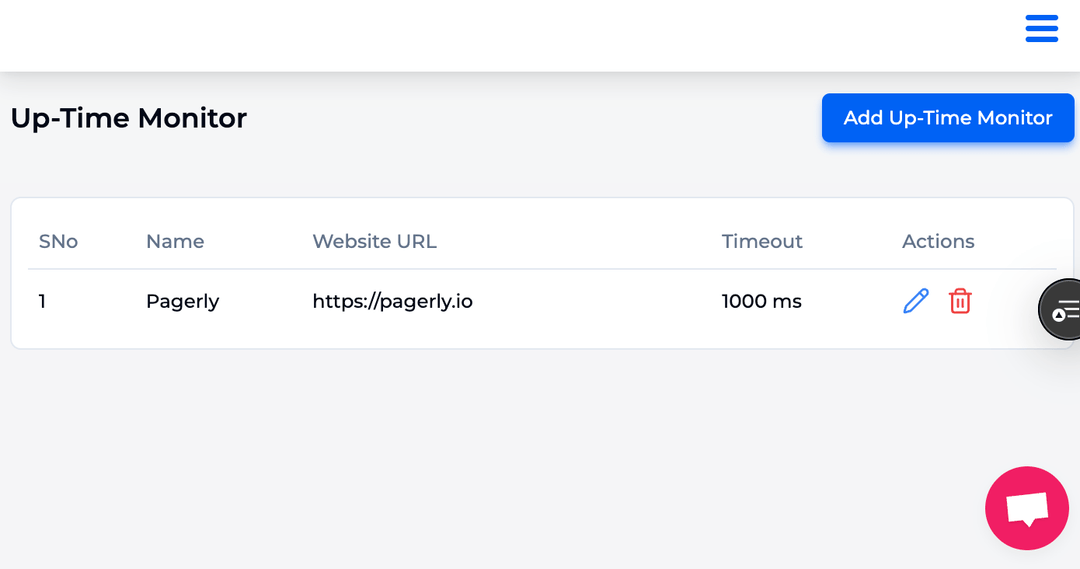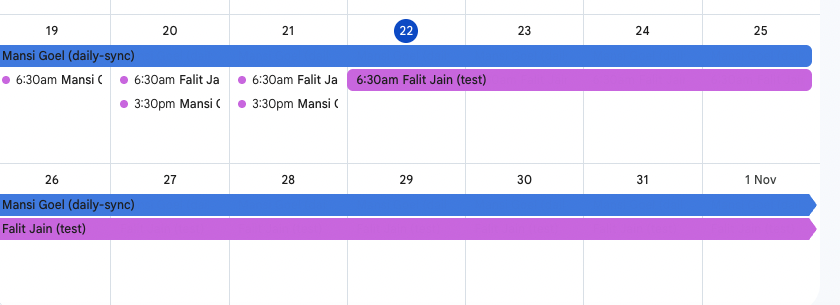
Managing on-call rotation is one of the most critical aspects of ensuring service reliability in modern engineering organizations. Whether you’re part of a small startup with just a few on-call engineers or a large enterprise with dedicated SRE teams, setting up effective call rotation schedules is essential to minimize downtime, improve customer satisfaction, and maintain work-life balance for your staff members.
This guide covers the essentials of on-call schedules, on-call responsibilities, best practices, and practical steps to design equitable rotations across different team sizes and time zones. Finally, we’ll show how Pagerly makes implementing and managing these processes seamless, scalable, and stress-free.
On-call rotation is a structured schedule designed to ensure that team members—most commonly operations engineers, SRE teams, or developers maintaining their own code—take turns being responsible for handling unexpected incidents that impact business continuity.
The purpose is simple: at any given time, there must be a right person available to detect, investigate, and resolve production incidents, critical services failures, or high-priority incidents before they escalate into widespread customer disruptions.
Here’s how it works in practice:
This on-call setup ensures that critical services remain available, and customers enjoy continuous uptime.
Implementing a proper on-call process isn’t just an operational necessity—it’s a foundation for service reliability and customer satisfaction. Here’s why:
Every minute of downtime directly impacts customer experience and business revenue. An effective on-call schedule ensures immediate response to high-priority incidents, reducing mean time to detection and resolution. This prevents small disruptions from snowballing into outages with greater impact.
Without structured on-call management, the same incident manager or senior engineer often ends up firefighting repeatedly. Over time, this leads to stress, mistakes, and even attrition. A shared rotation spreads on-call responsibilities across the operations team or SRE teams, ensuring resilience and sustainability.
Nobody should be permanently tethered to their laptop waiting for the next production incident. Structured on-call schedules, especially with shorter shifts or weekly rotations, protect engineers from alert fatigue. This balance is critical for job satisfaction and retaining skilled on-call employees.
The most important reason of all: customer satisfaction. A well-run on-call process means customers notice fewer issues, get quicker fixes, and build stronger trust in your services. Consistent, reliable support leads directly to higher loyalty and improved brand reputation.
While essential, creating equitable and effective on-call rotations comes with its own set of obstacles. Let’s break them down.
For small teams, covering 24/7 support is often a logistical nightmare. A handful of staff members may find themselves taking frequent night shifts, leading to exhaustion. Unlike larger enterprises that can afford multiple on-call employees, smaller teams have to make difficult trade-offs between service reliability and work-life balance.
Example: A startup with five engineers may try a weekly rotation, but that still means each person spends 10+ weeks a year on on-call duty, including nights and weekends. Without safeguards, this quickly becomes unsustainable.
Global companies often span North America, Europe, and Asia. Designing equitable on-call rotations across different time zones is tricky:
A sun schedule (handoffs across time zones) can help, but it requires careful coordination and robust tooling.
Too many alerts—especially for minor or low-severity events—cause alert fatigue. Engineers start ignoring notifications, missing critical issues in the process. The on-call employees feel overwhelmed, and high-priority incidents risk slipping through the cracks.
The key challenge is building smart filtering and prioritization into your on-call setup, so staff members only get paged for incidents requiring immediate human intervention.
When the on-call duty engineer doesn’t respond—whether due to sleep, illness, or overload—there must be a backup plan. Without clear escalation procedures, the right person may not get notified at the right time, leaving critical services unattended.
Challenges here include:
Organizations often underestimate the power of historical data. Without comprehensive knowledge bases, wiki pages, or incident runbooks, team managers lack insight into:
This lack of visibility makes it impossible to refine effective call rotation schedules, leaving teams in reactive mode instead of proactively improving on-call management.
An on-call rotation is only as strong as the structure and culture behind it. Simply assigning names to a schedule isn’t enough—teams need clear processes, fair distribution, and a focus on reducing stress while maintaining service reliability. Below are essential practices every engineering team should follow.
One of the biggest sources of friction in on-call management is ambiguity. Every on-call employee should know exactly what’s expected of them. Clear on-call responsibilities eliminate confusion and ensure fast, consistent responses.
Core responsibilities include:
🔑 Tip: Publish an “On-Call Runbook” with these duties spelled out so there’s zero ambiguity for new staff members.
The schedule type is the backbone of your on-call setup, and it should be tailored to your team size, workload, and time zones.
Common approaches include:
🔑 Tip: As your team scales, consider hybrid models—for example, daily shifts combined with follow-the-sun handoffs.
Fairness is critical for job satisfaction. If the same people repeatedly get stuck with weekends or night shifts, resentment builds quickly. Equitable on-call rotations distribute the workload fairly across all team members.
Best practices for fairness include:
🔑 Tip: Tools like Pagerly can automate fairness by tracking shifts and redistributing loads when imbalances occur.
Data is your strongest ally in refining effective call rotation schedules. Without it, you’re guessing.
Use historical data to analyze:
This analysis helps refine rotations, assign the right person at the right time, and continuously improve incident response.
🔑 Tip: Pair Pagerly’s analytics with your incident logs to surface blind spots and optimize schedules.
Alert fatigue is one of the most dangerous threats to on-call employees. When engineers are bombarded with low-severity alerts, they begin to ignore or delay responses—potentially missing high-priority incidents.
Essential practices to reduce noise include:
🔑 Tip: Pagerly’s filtering ensures on-call engineers only get paged for events requiring immediate human attention.
Even the best engineer might miss an alert—maybe their phone battery died, or they’re unwell. Without strong escalation procedures, this leads to longer outages and unhappy customers.
Key components of escalation:
🔑 Tip: Always test your escalation chain proactively to ensure no weak links.
Every incident is an opportunity to improve future responses. But without documentation, teams repeat the same mistakes.
Post-incident, always capture:
This ensures knowledge doesn’t live only in engineers’ heads—new team members can ramp up faster, and incident managers have better data for decision-making.
🔑 Tip: Pagerly can push resolution notes directly into your knowledge base, making documentation seamless.
Work-life balance isn’t just about happier engineers—it directly impacts service reliability. Burned-out engineers make more mistakes, and teams lose valuable talent.
Ways to promote balance include:
🔑 Tip: Healthy on-call employees are more productive, more engaged, and deliver better outcomes for both the operations team and customers.
Now that we’ve explored the challenges and best practices of on-call management, let’s look at how Pagerly makes implementing an on-call process not only painless, but also smarter, fairer, and more scalable.
Pagerly integrates directly with Slack and Microsoft Teams, the tools your teams already use daily. By embedding scheduling, escalation, and incident management into collaboration platforms, Pagerly eliminates the friction of juggling multiple dashboards, calendars, and spreadsheets.
Here’s how Pagerly transforms on-call management:
Manual schedules in spreadsheets often lead to human error, missed shifts, and scheduling conflicts. Pagerly solves this with automated scheduling, letting you create on-call rotations directly inside Slack or Teams.
🔑 Why it matters: Automation ensures there’s always a right person assigned at the right time, without burning out your on-call engineers or leaving gaps in coverage.
What sets Pagerly apart is its ability to handle complex on-call rotations using AI. Traditional tools struggle when teams span multiple geographies, own multiple services, or need highly adaptive schedules. Pagerly’s AI engine takes the complexity out of human hands.
🔑 Why it matters: AI transforms scheduling from a static calendar exercise into a living, adaptive system that evolves with your team’s needs and ensures service reliability without sacrificing work-life balance.
One of the biggest sources of confusion during critical services incidents is knowing who’s on call right now. Pagerly eliminates guesswork with real-time visibility:
🔑 Why it matters: Clear visibility reduces time wasted during incidents and ensures faster incident response.
Even the best on-call employees might miss an alert—whether they’re asleep, traveling, or unavailable. Pagerly ensures incidents never slip through the cracks with seamless escalation:
🔑 Why it matters: Strong escalation ensures high-priority incidents are never ignored, protecting customer satisfaction and service reliability.
An on-call rotation doesn’t exist in isolation—it ties directly into your incident response process. Pagerly integrates seamlessly to provide end-to-end coverage:
🔑 Why it matters: Integration reduces context switching and ensures teams can respond faster, coordinate better, and document effectively.
One of the most common complaints in on-call management is alert fatigue. Pagerly helps engineers focus by filtering alerts and applying smart routing rules:
🔑 Why it matters: By reducing noise, Pagerly prevents burnout, helps on-call engineers stay sharp, and ensures critical alerts always get the attention they deserve.
You can’t improve what you don’t measure. Pagerly provides data and analytics to help team managers and SRE teams refine their on-call process:
🔑 Why it matters: With historical data, you can make smarter staffing decisions, spot bottlenecks, and improve reliability proactively.
Whether you’re a small team wearing multiple hats or a global enterprise with dozens of services, Pagerly adapts to your needs.
🔑 Why it matters: Pagerly scales with you—from startups just launching new services to enterprises managing thousands of on-call employees
Traditional on-call rotation tools often work well for simple weekly rotations or daily on-call shifts, but they start breaking down when team managers need to set up complex on-call schedules across different time zones, multiple team sizes, or shifting on-call responsibilities for new services.
This is where Pagerly’s AI-powered on-call management comes in. Unlike static systems, Pagerly uses AI to dynamically build effective call rotation schedules that adapt to your team’s specific needs.
With Pagerly’s AI engine, you can design complex rotations that take into account:
The AI scheduler ensures the right people are assigned at the right time, without relying on manual adjustments.
Pagerly’s AI looks at historical data of production incidents and types of incidents to optimize scheduling. For example:
This data-driven approach ensures incident response is faster while still respecting work-life balance.
Pagerly’s AI enforces equitable on-call rotations automatically:
This prevents the all-too-common frustration where a few engineers end up carrying most of the on-call burden.
Instead of waiting for incidents, Pagerly’s AI can proactively suggest:
Large organizations often struggle with on-call setup when multiple SRE teams or operations teams are responsible for different critical services. Pagerly’s AI can:
Pagerly doesn’t just generate an on-call schedule once—it continuously refines it. As historical data grows and incident response metrics evolve, the AI automatically improves:
A successful on-call setup requires more than assigning names to a spreadsheet. It demands:
With Pagerly, organizations can adopt all of these essential practices with minimal friction. By automating on-call management, improving visibility, and providing analytics, Pagerly ensures the right tools are always available to connect the right people to the right incidents at the right time.
On-call rotation is the backbone of site reliability engineering and incident response. From on-call schedules and weekly rotations to shorter shifts and backup plans, the way you design and manage your on-call process directly affects service reliability, customer satisfaction, and the well-being of your on-call employees.
By following best practices, documenting lessons learned, and focusing on equitable scheduling, teams can handle critical services with confidence. And with Pagerly, the process becomes easier, smarter, and scalable across both small teams and global enterprises.
The result? Faster incident response, fewer disruptions in the middle of the night, and a stronger, healthier engineering culture.

